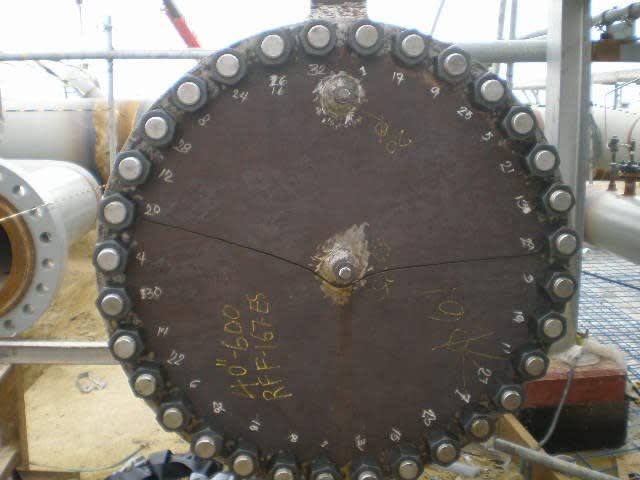zengx
Mechanical
- Apr 8, 2012
- 27
I am seeking your expert advise on determining the governing thickness for both welding and PWHT when welding a sockolet on a blind flange per ASME B31.8.
I have consulted several welding engineers and got different replies. Also, I did not find this case in any of the standard interpretations.
Attached is a snip of the welded joint in question and I seek your advise on the following:
1- Is PWHT required for this weld? and what is the governing thickness for PWHT inthis case? as per ASME B31.8 para. 825.2, Welds in all carbon steels shall be stress relieved when the nominal wall thickness exceeds 11⁄4 in. (32 mm). In this case, the thickness of the blind is 68mm. Also, I cannot relate this case to any of the exceptions in para. 825.5.
2- Does the WPS have to cover the base metal thickness of both the fitting and the blind? (per my knowledge, it should. However, I got several replies from experienced welding engineers that it needs only to cover the weld or fitting thickness).
Thanks in advance.
MD.
I have consulted several welding engineers and got different replies. Also, I did not find this case in any of the standard interpretations.
Attached is a snip of the welded joint in question and I seek your advise on the following:
1- Is PWHT required for this weld? and what is the governing thickness for PWHT inthis case? as per ASME B31.8 para. 825.2, Welds in all carbon steels shall be stress relieved when the nominal wall thickness exceeds 11⁄4 in. (32 mm). In this case, the thickness of the blind is 68mm. Also, I cannot relate this case to any of the exceptions in para. 825.5.
2- Does the WPS have to cover the base metal thickness of both the fitting and the blind? (per my knowledge, it should. However, I got several replies from experienced welding engineers that it needs only to cover the weld or fitting thickness).
Thanks in advance.
MD.

